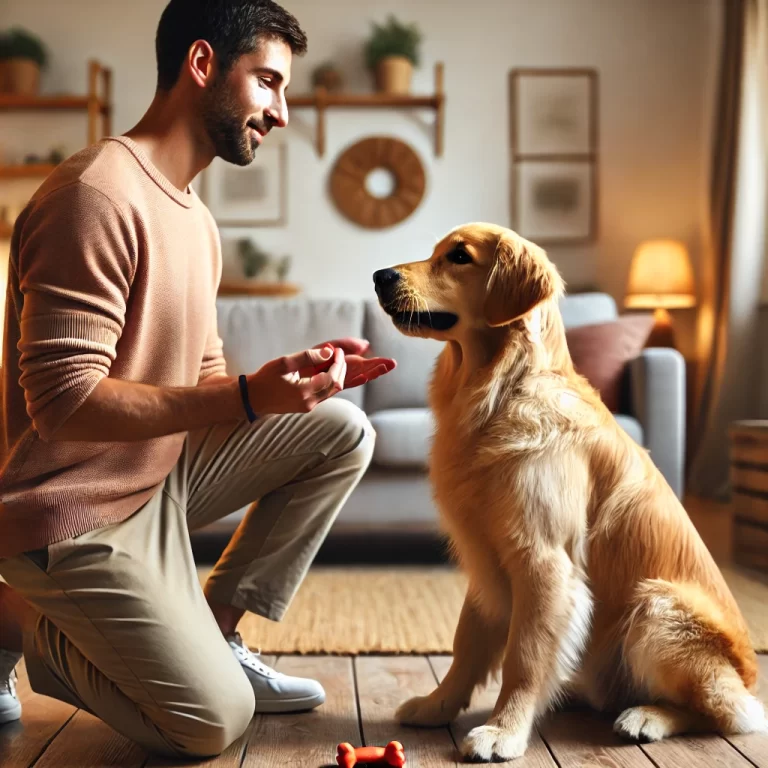How to Train a Dog to Speak?
Training a dog to speak on command is not only a fun trick but can also be useful in communication and behavior control. Whether you want your furry friend to alert you to strangers or simply perform for fun, teaching this skill requires patience, consistency, and positive reinforcement. This guide will walk you through a structured training method while ensuring a smooth and enjoyable learning process for both you and your dog.
Why Train Your Dog to Speak?
Before diving into the training steps, it’s important to understand why teaching your dog to bark on command can be beneficial:
- Improved Communication: Helps your dog understand when it is appropriate to bark.
- Safety and Security: A dog that barks on command can serve as an alert system in case of intruders or emergencies.
- Behavior Control: Once a dog learns to speak, it is easier to teach the “quiet” command to manage excessive barking.
- Mental Stimulation: Training exercises challenge your dog’s cognitive skills, keeping them engaged and happy.
Essential Supplies for Training
To successfully train your dog to speak, you’ll need:
- High-value treats: Use small, tasty treats to reward correct behavior.
- Clicker (optional): A clicker can be helpful in marking the exact moment your dog performs the desired action.
- Patience and consistency: Dogs learn at different paces, so remain patient and consistent throughout the training.
Step-by-Step Guide to Training Your Dog to Speak
Step 1: Identify a Natural Trigger
Your dog needs to understand what “speak” means before responding to the command. Identify a situation where your dog naturally barks, such as:
- When someone knocks on the door.
- During playtime.
- When they are excited for food or attention.
Step 2: Capture the Behavior
Once you identify a trigger, encourage your dog to bark naturally. When they do:
- Immediately reward them with a treat and praise.
- Use a command word like “speak” at the moment they bark.
- Reinforce the action with repetition, ensuring they associate the command with barking.
Step 3: Add a Hand Signal
In addition to the verbal cue, a hand signal helps reinforce the command. Common hand signals include:
- Opening and closing your fingers like a mouth.
- Pointing at your dog’s mouth.
Each time your dog barks on command, introduce the hand signal along with the verbal cue.
Step 4: Reinforce with Positive Rewards
Positive reinforcement is key to successful training. Whenever your dog barks on command, immediately reward them with:
- A treat.
- Verbal praise (“Good dog!”).
- A pat or a belly rub.
Avoid punishing your dog for not responding immediately, as this can create fear and confusion.
Step 5: Practice Regularly
Repetition is crucial for reinforcement. Practice the “speak” command:
- In short sessions (5-10 minutes) a few times a day.
- In different environments to ensure your dog generalizes the command.
- With distractions to increase focus and obedience.
Step 6: Teach the “Quiet” Command
Once your dog learns to speak, teaching them to be quiet is equally important.
- Wait for your dog to bark on command.
- Introduce the “quiet” command while showing a treat.
- Reward them once they stop barking.
- Repeat until they understand the difference between “speak” and “quiet”.
Step 7: Reduce Treat Dependency
Over time, gradually phase out treats while still using verbal praise and affection. This ensures your dog obeys the command without always expecting a treat.
Common Challenges & Solutions
1. My Dog Won’t Bark on Command
- Ensure they are in a situation that naturally encourages barking.
- Use a toy or exciting stimulus to elicit a bark.
- Be patient and try different triggers.
2. My Dog Barks Too Much
- Do not reward excessive barking.
- Ensure they understand the “quiet” command.
- Only reward barks that occur after your command.
3. My Dog Gets Too Excited
- Keep training sessions short and calm.
- Avoid rewarding hyperactivity.
- Use a calm and controlled voice during training.
Final Thoughts
Training your dog to speak can be an enjoyable experience that strengthens your bond. By using positive reinforcement and patience, you can successfully teach this trick while also gaining better control over your dog’s vocal habits. Remember, consistency and practice are the keys to success!
Ready to Start Training?
Grab some treats, find a quiet training space, and begin today! With persistence, your dog will soon master the “speak” command like a pro.







